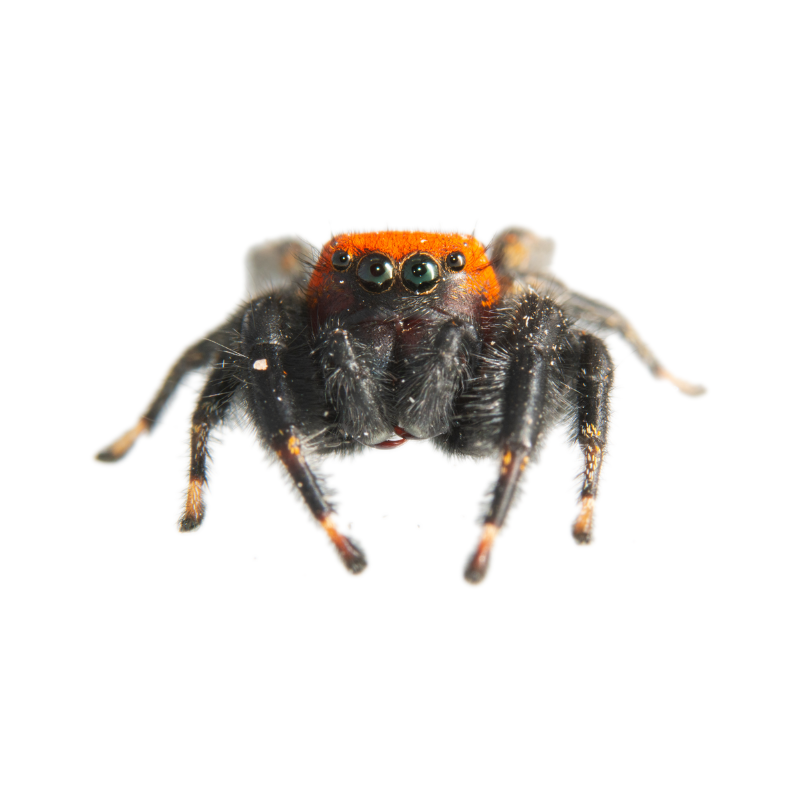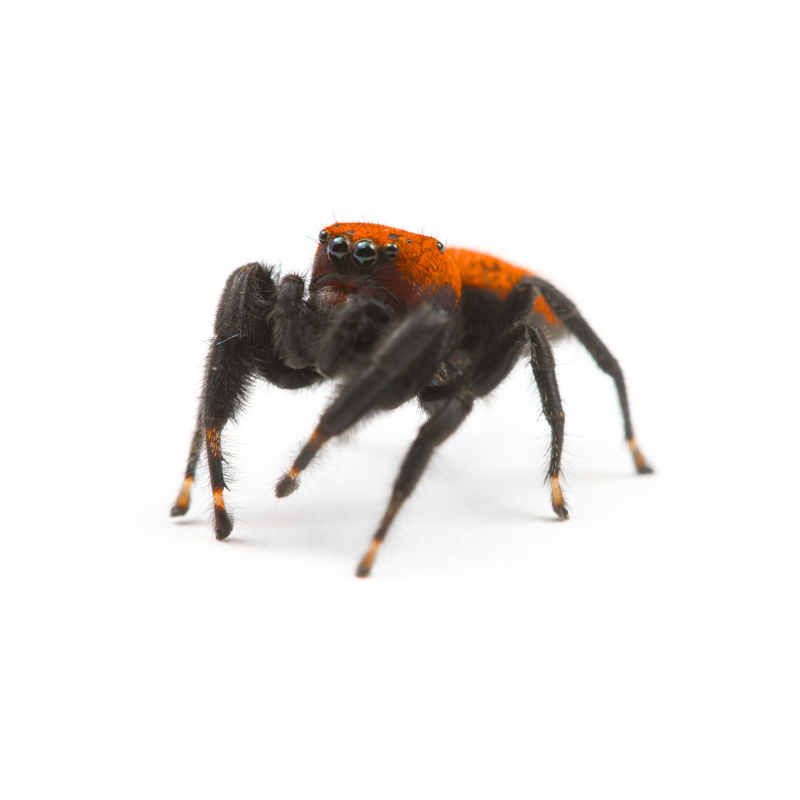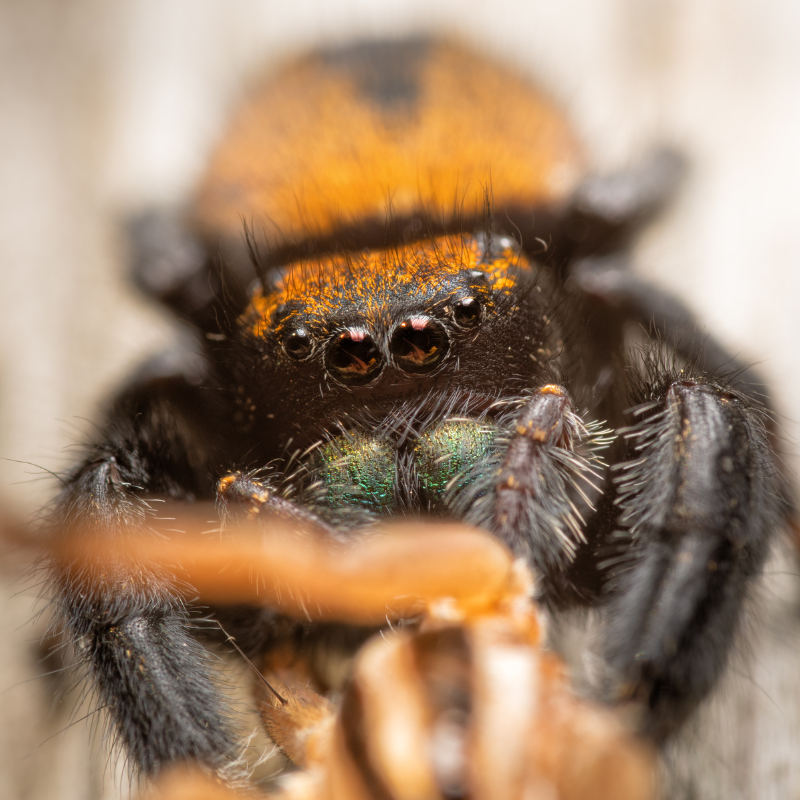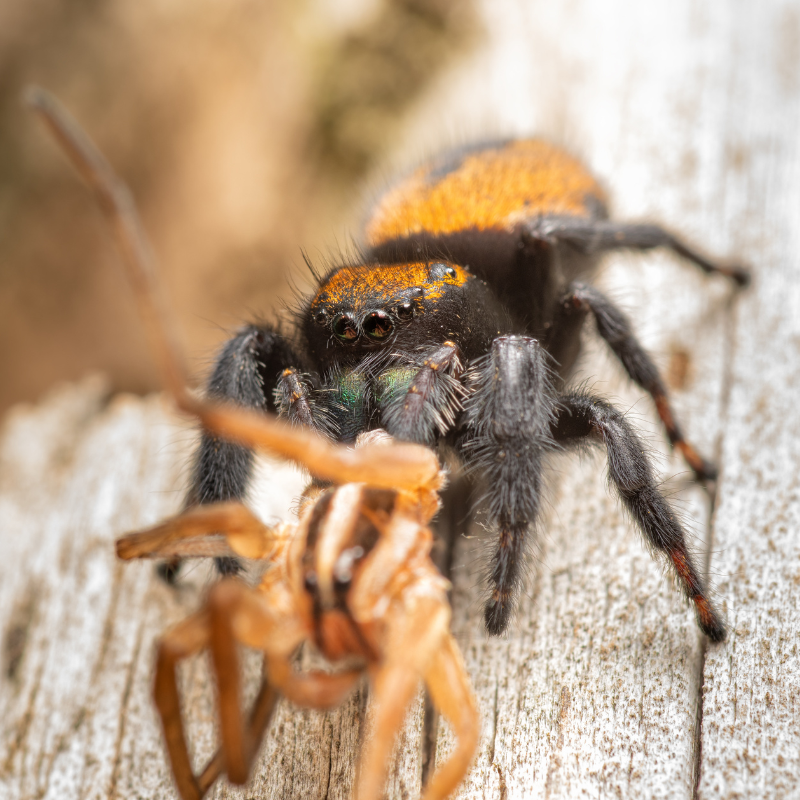The Apache jumping spider, Phidippus apacheanus, is a species native to the southwestern states of North America, being most abundant in the states of Nebraska, Utah, Texas, and Arizona, and it can be found in most parts of the United States except for the northeast and far western regions. It has also been observed in southern Minnesota and southern Wisconsin, although sightings are rare. Phidippus apacheanus inhabits a variety of habitats, including dry grasslands, fields, and deserts. It is commonly found on shrubs, cacti, and other perennial vegetation in arid areas. The spider constructs nests on the undersides of sunflower leaves and among cactus joints and thorns in desert habitats. It has also been spotted in suburban and agricultural areas, such as on fence posts, in barns, and on roads. This species is a relatively large jumping spider, belonging to the Salticidae family. It exhibits sexual dimorphism, with females being larger than males. The size of Phidippus apacheanus ranges from 3.3 mm for small males to 22 mm for large, gravid females. The chelicerae, or mouthparts, of this spider have an iridescent green coloration. The female is mostly black with orange markings on the cephalothorax (head and thorax) and abdomen. It may have a black stripe on the abdomen and yellow, orange, or red dorsal coloration. The male is similar in appearance but is usually red-orange and has solid coloration. The spiderlings (immature spiders) resemble adult females but may have a black body with black leg segments. The life cycle of Phidippus apacheanus begins with the hatching of eggs, and the immature spiders can be found during spring and summer. They undergo three molts before reaching adulthood, which typically occurs in September or October. The mating process involves an elaborate courtship display by the male, including visual and physical displays, as well as tactile interactions with the female. Mating occurs in the fall, and females lay two to three batches of eggs, with each subsequent batch containing fewer eggs. The eggs hatch after approximately 18 to 25 days, and the spiderlings remain in the nest for up to 21 days before dispersing. The female usually guards the nest until this point and often dies shortly after. Phidippus apacheanus is a diurnal (active during the day) spider that does not spin webs for capturing prey. Instead, it constructs small tent-like silken retreats under rocks, logs, or plants, which it uses at night and during hibernation. The spider is most active in sunny conditions and tends to remain in its retreat on cloudy or rainy days. It possesses excellent vision, with a pair of large principal eyes providing binocular vision and color perception, potentially including ultraviolet wavelengths. Vision and touch are used for communication and courtship rituals. As a carnivorous species, Phidippus apacheanus preys on a wide range of invertebrates, including flies, butterflies, beetles, spiders, and other insects. Its diet varies depending on its size, with larger individuals capable of capturing larger prey.












Reviews
There are no reviews yet.